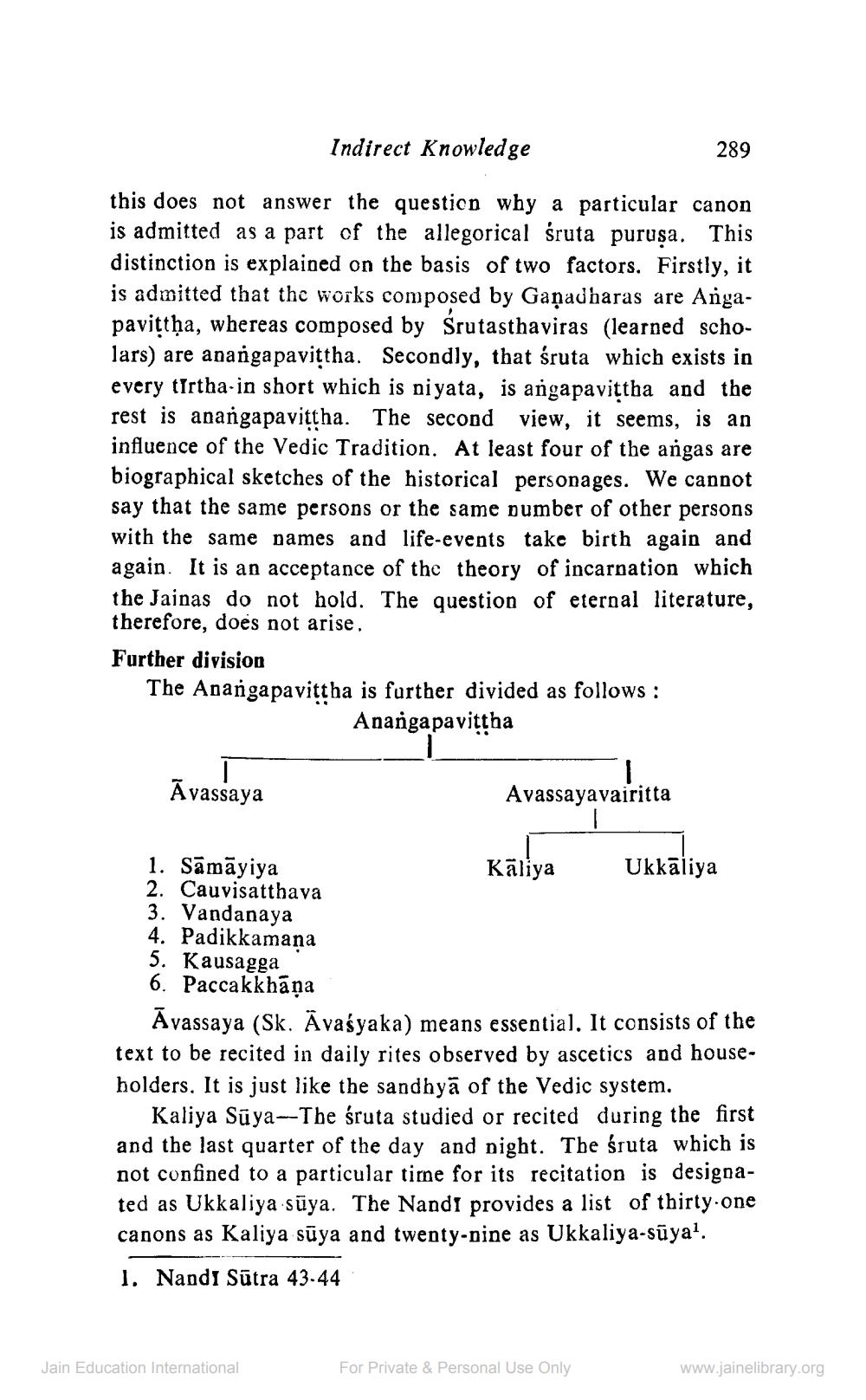________________
Indirect Knowledge
289
this does not answer the question why a particular canon is admitted as a part of the allegorical śruta purusa. This distinction is explained on the basis of two factors. Firstly, it is admitted that the works composed by Gañadharas are Angapavittha, whereas composed by Srutasthaviras (learned scholars) are anangapavittha. Secondly, that śruta which exists in every tirtha-in short which is niyata, is angapavittha and the rest is anangapavittha. The second view, it seems, is an influence of the Vedic Tradition. At least four of the angas are biographical sketches of the historical personages. We cannot say that the same persons or the same number of other persons with the same names and life-events take birth again and again. It is an acceptance of the theory of incarnation which the Jainas do not hold. The question of eternal literature, therefore, does not arise Further division The Anangapavittha is further divided as follows:
Anangapavittha
Āvassaya
Avassayavairitta
1. Sāmāyiya
Käliya
Ukkaliya 2. Cauvisatthava 3. Vandanaya 4. Padikkamaņa 5. Kausagga 6. Paccakkhāņa
Avassaya (Sk. Āvaśyaka) means essential. It consists of the text to be recited in daily rites observed by ascetics and householders. It is just like the sandhyā of the Vedic system.
Kaliya Sûya-The śruta studied or recited during the first and the last quarter of the day and night. The śruta which is not confined to a particular time for its recitation is designated as Ukkaliya sūya. The Nandi provides a list of thirty.one canons as Kaliya sūya and twenty-nine as Ukkaliya-sūya'.
1. Nandi Sūtra 43-44
Jain Education International
For Private & Personal Use Only
www.jainelibrary.org




